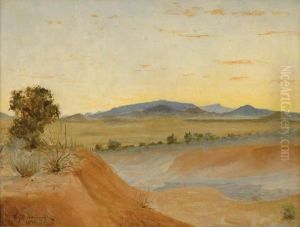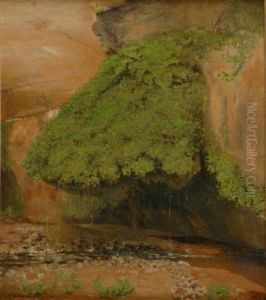Frederick Samuel Dellenbaught Paintings
Frederick Samuel Dellenbaugh was an American explorer, painter, and writer known for his work related to the American West. Born on September 13, 1853, in McConnelsville, Ohio, Dellenbaugh developed an interest in art and exploration at a young age. He moved to Indiana with his family during his childhood, where he began painting and studying nature.
Dellenbaugh's love for adventure led him to join Major John Wesley Powell's second expedition down the Colorado River at the age of 17. This experience was seminal in shaping his future career. He served as the expedition's artist and assistant topographer. The journey, which lasted from 1871 to 1873, provided him with a wealth of material for his later artistic and writing endeavors. His firsthand experiences exploring the American West were instrumental in his development as a landscape painter, and his works often depicted scenes from his travels.
After the expedition, Dellenbaugh traveled to Europe to study art, spending time in Munich and Venice. Upon returning to the United States, he continued to paint, write, and lecture about the American West. He played an important role in documenting the landscapes and indigenous cultures of the regions he explored, contributing to the national interest in the American frontier.
Throughout his career, Dellenbaugh published several books, including 'The Romance of the Colorado River' (1902) and 'A Canyon Voyage' (1908), which detailed his experiences and observations from his travels. He was also a founding member of the Explorers Club in 1904, reflecting his significant contributions to the field of exploration.
Dellenbaugh's artistic works were widely recognized during his lifetime. His paintings are characterized by their detailed realism and the artist's ability to capture the grandeur of the landscapes he encountered. His legacy includes not only his art but also his written works and maps, which continue to be valued for their historical and geographic significance.
Frederick Samuel Dellenbaugh passed away on January 29, 1935, in New York City. His life's work provides a vivid pictorial record of the American West during a time of significant change and expansion. His contributions to art, exploration, and the documentation of American history remain an important part of the cultural heritage of the United States.

